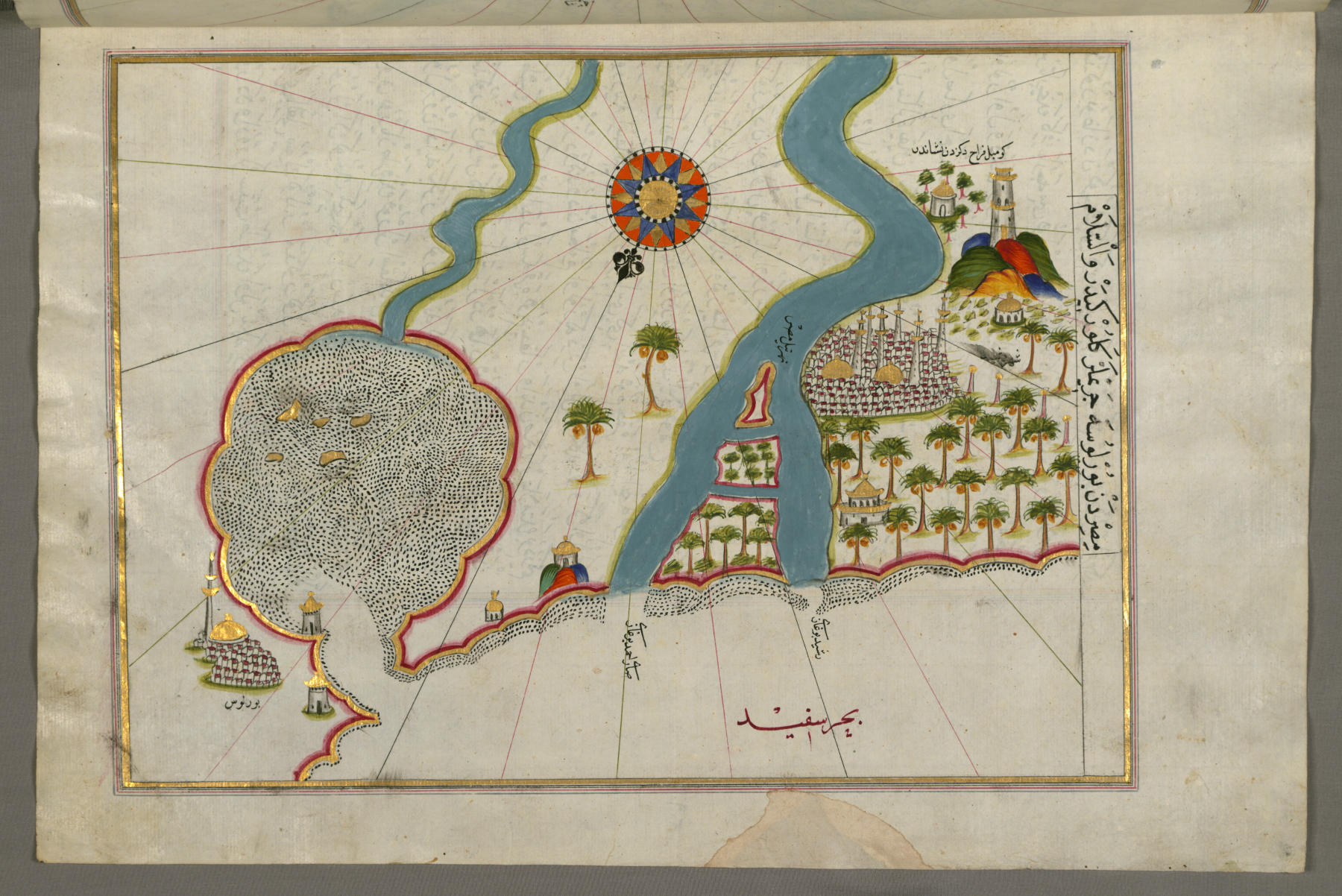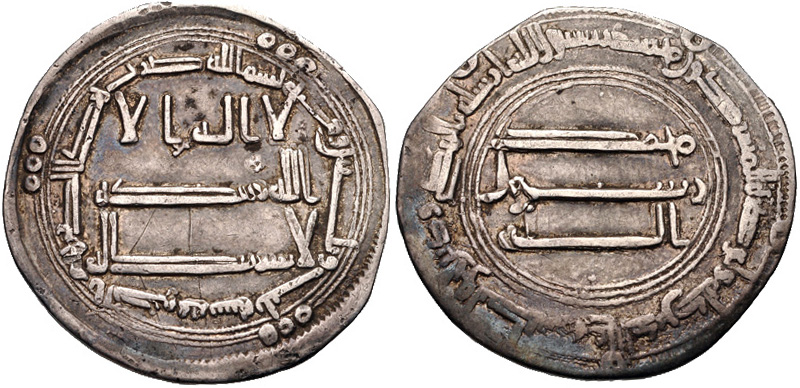|
Al-Afshin
Ḥaydar ibn Kāwūs ( ar, حيدر بن كاوس, fa, خِیذَر اِبنِ کاووس, Kheyzar ebn-e Kāvus), better known by his hereditary title of al-Afshīn ( ar, الأفشين, fa, اَفشین, Afshin), was a senior general of Sogdian Iranian descent at the court of the Abbasid caliphs and a vassal prince of Oshrusana. He played a leading role in the campaigns of Caliph al-Mu'tasim, and was responsible for the suppression of the rebellion of Babak Khorramdin and for his battlefield victory over the Byzantine emperor Theophilos during the Amorium campaign. Eventually he was suspected of disloyalty and was arrested, tried and then executed in June 841.C. Edmund Bosworth(2005), "OSRUŠANA" in Encyclopædia Iranica. Accessed November 201"At the time of the Arab incursions into Transoxania, Osrušana had its own line of Iranian princes, the Afšins (Ebn Ḵordāḏbeh, p. 40), of whom the most famous was the general of the caliph Moʿtaṣem (q.v. 833-42), the Af� ... [...More Info...] [...Related Items...] OR: [Wikipedia] [Google] [Baidu] |
Al-Mu'tasim
Abū Isḥāq Muḥammad ibn Hārūn al-Rashīd ( ar, أبو إسحاق محمد بن هارون الرشيد; October 796 – 5 January 842), better known by his regnal name al-Muʿtaṣim biʾllāh (, ), was the eighth Abbasid caliph, ruling from 833 until his death in 842. A younger son of Caliph Harun al-Rashid (r. 786–809), he rose to prominence through his formation of a private army composed predominantly of Turkic slave-soldiers (, sing. ). This proved useful to his half-brother, Caliph al-Ma'mun, who employed al-Mu'tasim and his Turkish guard to counterbalance other powerful interest groups in the state, as well as employing them in campaigns against rebels and the Byzantine Empire. When al-Ma'mun died unexpectedly on campaign in August 833, al-Mu'tasim was thus well placed to succeed him, overriding the claims of al-Ma'mun's son al-Abbas. Al-Mu'tasim continued many of his brother's policies, such as the partnership with the Tahirids, who governed Khurasan and Bagh ... [...More Info...] [...Related Items...] OR: [Wikipedia] [Google] [Baidu] |
Battle Of Anzen
The Battle of Anzen or Dazimon was fought on 22 July 838 at Anzen or Dazimon (now Dazmana (Akçatarla), Turkey) between the Byzantine Empire and the forces of the Abbasid Caliphate. The Abbasids had launched a massive expedition with two separate armies in retaliation for the Byzantine emperor Theophilos's successes the previous year, and aimed to sack Amorion, one of Byzantium's largest cities. Theophilos with his army confronted the smaller Muslim army, under the Iranian vassal prince Afshin, at Dazimon. The numerically superior Byzantine army was initially successful, but when Theophilos resolved to lead an attack in person, his absence from his usual post caused panic among the Byzantine troops, who feared that he had been killed. Coupled with a fierce counterattack by Afshin's Turkish horse-archers, the Byzantine army broke and fled. Theophilos and his guard were surrounded on a hill, but managed to escape. The defeat opened the way for the brutal sack of Amorion a few ... [...More Info...] [...Related Items...] OR: [Wikipedia] [Google] [Baidu] |
Abbasid Samarra
Samarra is a city in central Iraq, which served as the capital of the Abbasid Caliphate from 836 to 892. Founded by the caliph al-Mu'tasim, Samarra was briefly a major metropolis that stretched dozens of kilometers along the east bank of the Tigris, but was largely abandoned in the latter half of the 9th century, especially following the return of the caliphs to Baghdad. Due to the relatively short period of occupation, extensive ruins of Abbasid Samarra have survived into modern times. The layout of the city can still be seen via aerial photography, revealing a vast network of planned streets, houses, palaces and mosques. Studies comparing the archeological evidence with information provided by Muslim historians have resulted in the identification of many of the toponyms within the former city. The archeological site of Samarra was named by UNESCO as a World Heritage Site in 2007, calling it "the best-preserved plan of an ancient large city." The modern city bearing the same na ... [...More Info...] [...Related Items...] OR: [Wikipedia] [Google] [Baidu] |
Afshin
Afshin ( fa, افشین / ''Afšīn'') is a common Persian given name, which is a modern Persian word derived from Avestan. Afshin was used by the Sogdians. Historically, it was the princely title of the rulers of Osrushana at the time of the Muslim conquest. The Afshins of Osrushana were an Iranian principality in Central Asia of whom the later Abbasid general Khaydhar ibn Kawus al-Afshin is the most famous. Etymology ''Afšīn'' is the Arabicized form of the Middle Persian ''Pišīn'', which traces back to the Avestan ''Pisinah''. In pre-Islamic Iranian tradition, it is the name of a grandson of Kayānid king Kavād ( Yt. 13.132, 19.71). In the Islamic period, it is found as a proper name attested by Armenian historians in the form ''Ōšin'' (from ''Awšin''). in Encyclopedia Iranica. |
Bashmurian Revolt
Bashmurian revolts (, ar, ثورة البشموريين) were a series of revolts by the Egyptians in the Bashmur region in the north of the Nile Delta against the Umayyad and Abbasid Caliphates in the eighth and ninth centuries. Exactly how many revolts there were cannot be determined, but the major military conflicts took place in 749, 767 and 831–832. The Bashmurian revolts are known from Coptic and Arabic sources. They did not become known in Europe until the early nineteenth century. Both Coptic and Arabic sources attribute them to oppressive taxation and the unjust treatment of Christians by the Arab governors. Location The exact boundaries of Bashmur varied over time depending on where the Bashmurians were settled. At the time of the revolts, it seems to have lain across the northern Delta just south of the Mediterranean from Fuwwa in the west to Ashmun al-Rumman in the east. By the thirteenth century, the Bashmurians seem to have been confined to the eastern Delt ... [...More Info...] [...Related Items...] OR: [Wikipedia] [Google] [Baidu] |
Babak Khorramdin
, native_name_lang = , birth_date = 795 or 798 , birth_place = Ardabil, Abbasid Caliphate , spouse = Banu , death_date = probably 7 January 838 (age 40 or 43) , death_place = Samarra, Abbasid Caliphate , years_active = 23 years , known_for = Leader of the Khorram-Dinān , opponents = Abbasid Caliphate Bābak Khorramdin ( Persian: بابک خرمدین, ''Bābak-e Khorramdin'', from Middle Persian ''"Pāpak"''/''"Pābag"'', meaning ''"Young Father"''; 795 or 798 – January 838) was one of the main Iranian revolutionary leaders of the Iranian Khorram-Dinān ("Those of the joyous religion"), which was a local freedom movement fighting the Abbasid Caliphate. Khorramdin appears to be a compound analogous to ''dorustdin'' " orthodoxy" and ''Behdin'' "Good Religion" (Zoroastrianism), and are considered an offshoot of neo-Mazdakism. Babak's Iranianizing rebellion, from its base in Azerbaijan in northwestern Iran, called for a return of the po ... [...More Info...] [...Related Items...] OR: [Wikipedia] [Google] [Baidu] |
Theophilos (emperor)
Theophilos ( gr, Θεόφιλος; sometimes Latinized or Anglicized as Theophilus or Theophilo; c. 812 20 January 842) was the Byzantine Emperor from 829 until his death in 842. He was the second emperor of the Amorian dynasty and the last emperor to support iconoclasm.Timothy E. Gregory (2010). ''A History of Byzantium''. Blackwell Publishing Ltd. p. 227. Theophilos personally led the armies in his long war against the Arabs, beginning in 831. Life Early Theophilos was the son of the Byzantine Phrygian Greek Emperor Michael II and his wife Thekla, and the godson of Emperor Leo V the Armenian. Michael II crowned Theophilos co-emperor in 821. The date is almost universally given as 12 May 821 (Whitsunday), although this is not really corroborated by any source (another possible date is 24 March, Easter). Unlike his father, Theophilos received an extensive education from John Hylilas, the grammarian, and was a great admirer of music and art. On 2 October 829, Theophilos su ... [...More Info...] [...Related Items...] OR: [Wikipedia] [Google] [Baidu] |
Sogdia
Sogdia ( Sogdian: ) or Sogdiana was an ancient Iranian civilization between the Amu Darya and the Syr Darya, and in present-day Uzbekistan, Turkmenistan, Tajikistan, Kazakhstan, and Kyrgyzstan. Sogdiana was also a province of the Achaemenid Empire, and listed on the Behistun Inscription of Darius the Great. Sogdiana was first conquered by Cyrus the Great, the founder of the Achaemenid Empire, and then was annexed by the Macedonian ruler Alexander the Great in 328 BC. It would continue to change hands under the Seleucid Empire, the Greco-Bactrian Kingdom, the Kushan Empire, the Sasanian Empire, the Hephthalite Empire, the Western Turkic Khaganate and the Muslim conquest of Transoxiana. The Sogdian city-states, although never politically united, were centered on the city of Samarkand. Sogdian, an Eastern Iranian language, is no longer spoken, but a descendant of one of its dialects, Yaghnobi, is still spoken by the Yaghnobis of Tajikistan. It was widely spoken in Centr ... [...More Info...] [...Related Items...] OR: [Wikipedia] [Google] [Baidu] |
Kawus Ibn Kharakhuruh
Kawus ibn Kharakhuruh was the ruler ( Sogdian: '' afshin'') of the Principality of Ushrusana during the 9th-century. He was the son and successor of Kharakhuruh. Biography Kawus is first mentioned in ca. 802, when the Abbasid prince al-Ma'mun made several campaigns against Osrushana in order to ensure that Kawus stayed loyal to him. However, when al-Ma'mun ascended the Abbasid throne in 813, Kawus declared independence from the Abbasid Caliphate. In ca. 818, a civil war ensued in Osrushana between several princes. Kawus managed to emerge victorious, while his son Khaydar fled to the Abbasid court in Baghdad. In 822, an Abbasid army under Ahmad ibn Abi Khalid al-Ahwal conquered Osrushana and captured Kawus ibn Kharakhuruh; he was sent to Baghdad, where he submitted to the Caliph and converted to Islam. From this point on, Osrushana was generally considered to be part of the Abbasid state, although the ''afshīn''s were allowed to retain their control over the country as subject ... [...More Info...] [...Related Items...] OR: [Wikipedia] [Google] [Baidu] |
Al-Ma'mun
Abu al-Abbas Abdallah ibn Harun al-Rashid ( ar, أبو العباس عبد الله بن هارون الرشيد, Abū al-ʿAbbās ʿAbd Allāh ibn Hārūn ar-Rashīd; 14 September 786 – 9 August 833), better known by his regnal name Al-Ma'mun ( ar, المأمون, al-Maʾmūn), was the seventh Abbasid caliph, who reigned from 813 until his death in 833. He succeeded his half-brother al-Amin after a civil war, during which the cohesion of the Abbasid Caliphate was weakened by rebellions and the rise of local strongmen; much of his domestic reign was consumed in pacification campaigns. Well educated and with a considerable interest in scholarship, al-Ma'mun promoted the Translation Movement, the flowering of learning and the sciences in Baghdad, and the publishing of al-Khwarizmi's book now known as "Algebra". He is also known for supporting the doctrine of Mu'tazilism and for imprisoning Imam Ahmad ibn Hanbal, the rise of religious persecution ('' mihna''), and for the r ... [...More Info...] [...Related Items...] OR: [Wikipedia] [Google] [Baidu] |
Harun Al-Rashid
Abu Ja'far Harun ibn Muhammad al-Mahdi ( ar , أبو جعفر هارون ابن محمد المهدي) or Harun ibn al-Mahdi (; or 766 – 24 March 809), famously known as Harun al-Rashid ( ar, هَارُون الرَشِيد, translit=Hārūn al-Rashīd) was the fifth Abbasid caliph of the Abbasid Caliphate, reigning from September 786 until his death. His reign is traditionally regarded to be the beginning of the Islamic Golden Age. His epithet "al-Rashid" translates to "the Orthodox", "the Just", "the Upright", or "the Rightly-Guided". Harun established the legendary library Bayt al-Hikma ("House of Wisdom") in Baghdad in present-day Iraq, and during his rule Baghdad began to flourish as a world center of knowledge, culture and trade. During his rule, the family of Barmakids, which played a deciding role in establishing the Abbasid Caliphate, declined gradually. In 796, he moved his court and government to Raqqa in present-day Syria. A Frankish mission came to offer ... [...More Info...] [...Related Items...] OR: [Wikipedia] [Google] [Baidu] |




.jpg)




